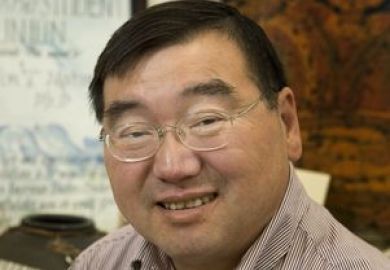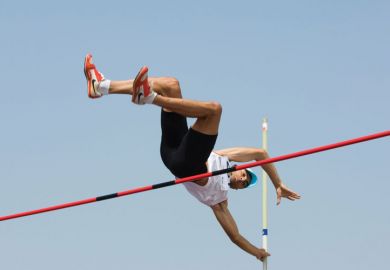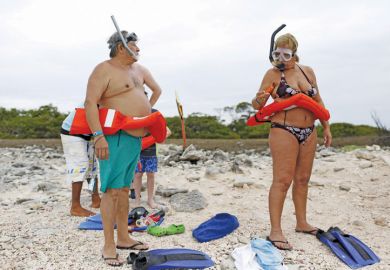The US President's historic visit to China was bold but not as productive as has been claimed, Hans van de Ven finds
During the Second World War, US President Franklin Roosevelt promoted Chiang Kai-shek's China as one of the Big Four in the hope of turning the country into the East Asian pillar of a new postwar world order. The Unequal Treaties were abolished, Western privileges in China were given up, and Chiang was treated as an equal to Roosevelt and Winston Churchill at the 1943 Cairo Conference.
When the UN was established, China was given a permanent seat on the Security Council. Churchill did not think much of the idea: he recoiled at the thought that Chinese troops might help in the postwar occupation of Germany and continued to believe in empire. The American dream of a resurgent China turned sour because the country proved the "weak reed" among the Allies. After Japan capitulated in August 1945, civil war broke out between the Communists and the Nationalists. The US avoided involvement and, after the Communist victory and the retreat of the Nationalists to Taiwan, Japan took China's place as America's main ally in East Asia.
Today, units from China's People's Liberation Army are not in Europe, yet, but they are in the Middle East, where its soldiers form part of the UN Interim Force in Lebanon. China holds $320 billion (£168 billion) of Treasury bonds, making it the second largest holder after Japan, and so is critical to funding the US trade deficit, keeping the dollar stable and supporting the lifestyles of US consumers. If China has been unable to make North Korea conform to its wishes, it is generally accepted that without China's co-operation the international community would be even more powerless to contain North Korea.
The surging Chinese economy has led China to look not just for markets and investors but also for primary resources in the Middle East, Central Asia, South and South-East Asia, Africa and South America. All these facts symbolise that China is rapidly emerging as a great power, even if it remains weak militarily.
Margaret MacMillan's Seize the Hour takes us back to February 1972 when President Richard Nixon's famous and photogenic journey to China ended the People's Republic's isolation from the West. The book, which is carefully researched, skilfully put together and highly readable, provides lively vignettes of the main players: Richard "Tricky Dicky" Nixon himself; Henry Kissinger, whose 1971 secret mission to Beijing, facilitated by Pakistan's President Yahya Khan, set in motion the events that would lead to the visit; a Delphic Mao Zedong, who had been near death only a week before he met Nixon; and Zhou Enlai, the wily, gracious and ruthless Chinese Premier.
Their backgrounds, foibles and visions of the world are set out in deft detail. A host of other characters provide extra interest: Pat Nixon, the long-suffering but loyal wife; John Haldeman, Nixon's chief-of-staff who stage-managed the visit; William Rogers, the Secretary of State who tried to keep up his dignity while being sidelined by both Nixon and Kissinger; Alexei Kosygin, the Soviet Premier who flew to Beijing when, in 1969, border clashes between the Soviet Union and China threatened to escalate into a major war; and Ronald Reagan, sent to Taiwan to mollify Chiang. Even Donald Rumsfeld has a cameo role as a young Paris embassy staffer tasked with passing a secret message to Chinese diplomats.
The book's narrative thread is provided by the visit itself, which began when Zhou welcomed Nixon with a discourteously small retinue at the airport in Beijing on February 17 and ended when 11 days later an exhausted but ebullient Nixon flew from Shanghai to a rapturous welcome at Andrews Air Force Base. We are told about the many banquets, the short meeting between Nixon and Mao at which a cynical Mao teased his interlocutors and refused to be drawn into any serious discussion, and the many long discussions between Kissinger and Zhou. Famously, Kissinger chose to see his Chinese counterparts as mysterious, elusive and subtle: "Everything ever said to me by any Chinese of any station was part of an intricate design - even when with my slower Occidental mind it took me a while to catch on." For Kissinger, the encounter was a test of his intelligence, which he claimed he passed with flying colours. MacMillan rubbishes any suggestion that it was Kissinger, and not Nixon, who was the real driving force behind the opening to China. She portrays Kissinger as so enamoured of Zhou and so desirous to make his mark in history that he gave away a huge number of secrets without return and made promises that he could not deliver.
The tension that drives the story forward is provided by the negotiations over the joint communiqué, in the end issued in Shanghai on the last full day of the visit. Nixon had gone to China uncertain that Mao would meet him and with the US and China divided over what the communique would say.
Taiwan was the most important issue. China demanded that the US recognise that Taiwan was an integral part of China and that it withdraw its forces from the island. The Americans could not go that far because of domestic political reasons, but also because they could not cavalierly abandon an ally without incurring great costs elsewhere.
The Americans in turn demanded China's renunciation of force in seeking reunification with Taiwan and its help in achieving an honourable withdrawal from Vietnam by pressuring the North Vietnamese. The Chinese refused both demands. The Shanghai communique nearly did not happen. Too much divided China and the US. A first breakthrough was the agreement that, rather than setting out a common position, each side would state its own.
The Taiwan issue was finally settled with the fudge that the US recognised that "all Chinese on either side of the Taiwan Strait maintain there is but one China and that Taiwan is part of China". But when Rogers was shown the text on the aircraft that took the US delegation from Beijing to Shanghai, he blew his top because it mentioned the US defence treaties with Korea and Japan but not with Taiwan and other countries in South-East Asia. This recalled the failure of Secretary of State Dean Acheson in 1950 to mention South Korea and Taiwan when indicating the US defence perimeter in East Asia, which may have caused Kim Il-Jong, Stalin and Mao to believe that the US would not defend these areas and so help to trigger the Korean War.
Kissinger was sent back to the negotiating table late at night before the last full day of the trip. Through-the-night negotiations led to the decision not to include any of the US's defence commitments but instead to talk of "strong bonds" with Japan and Korea.
MacMillan's treatment of the Nixon-Mao encounter adopts the narrative techniques of television series such as Hill Street Blues , ER and Friends .
The focus is on a few key individuals as they live through a short time span. Much space is devoted to everyday frustrations and the highs and lows of each day. The stuff of more traditional diplomatic history - treaties, the interstate jockeying for position, bureaucratic rivalries and military affairs - is not omitted but set out in flashback sections.
This is one way, then, of writing the new diplomatic history, which pays attention to symbols, the media, polling data, personalities, human relations and accident. An important thing the book makes clear is how successful the Nixon Administration was in using the media to impose its presentation of the trip on the public imagination as a major event that would change history for the better. MacMillan's judgment is that, despite the serious shortcomings of the major protagonists, the step they took was brave but not as surprising or bold as suggested at the time, nor as productive of results as hoped.
The deepening of détente beforehand, the waning of the pro-Nationalist China lobby in the US, the Vietnam War and the Chinese desire to find a common opponent to the Soviet Union all created a natural foundation for the restoration of contact. American hopes that China would help in bringing the Vietnam War to an end proved false, and the Cultural Revolution in China and the Watergate scandal made both countries turn inwards. Neither side thought much about trade, yet the resumption of commercial relations has proved the most significant result of the restoration of relations.
The issue of Taiwan was not resolved and remains an intractable problem.
The War on Terror muted fears that China would be America's Public Enemy Number One in the future, as was asserted in Samuel Huntington's The Clash of Civilisations? in 1993 and threatened to become a reality in the early days of the Bush Administration when the spy-plane incident of April 2001 looked likely to drive the two countries apart. One lesson that could be drawn from Nixon's trip to China is that some good things can happen when a US administration recognises the limits of military force and engages with a government thought to represent a fundamental challenge to US dominance.
Hans van de Ven is professor of modern Chinese history, Cambridge University.
Seize the Hour: When Nixon Met Mao
Author - Margaret MacMillan
Publisher - John Murray
Pages - 384
Price - £25.00
ISBN - 0 7195 6522 7
Register to continue
Why register?
- Registration is free and only takes a moment
- Once registered, you can read 3 articles a month
- Sign up for our newsletter
Subscribe
Or subscribe for unlimited access to:
- Unlimited access to news, views, insights & reviews
- Digital editions
- Digital access to THE’s university and college rankings analysis
Already registered or a current subscriber?



